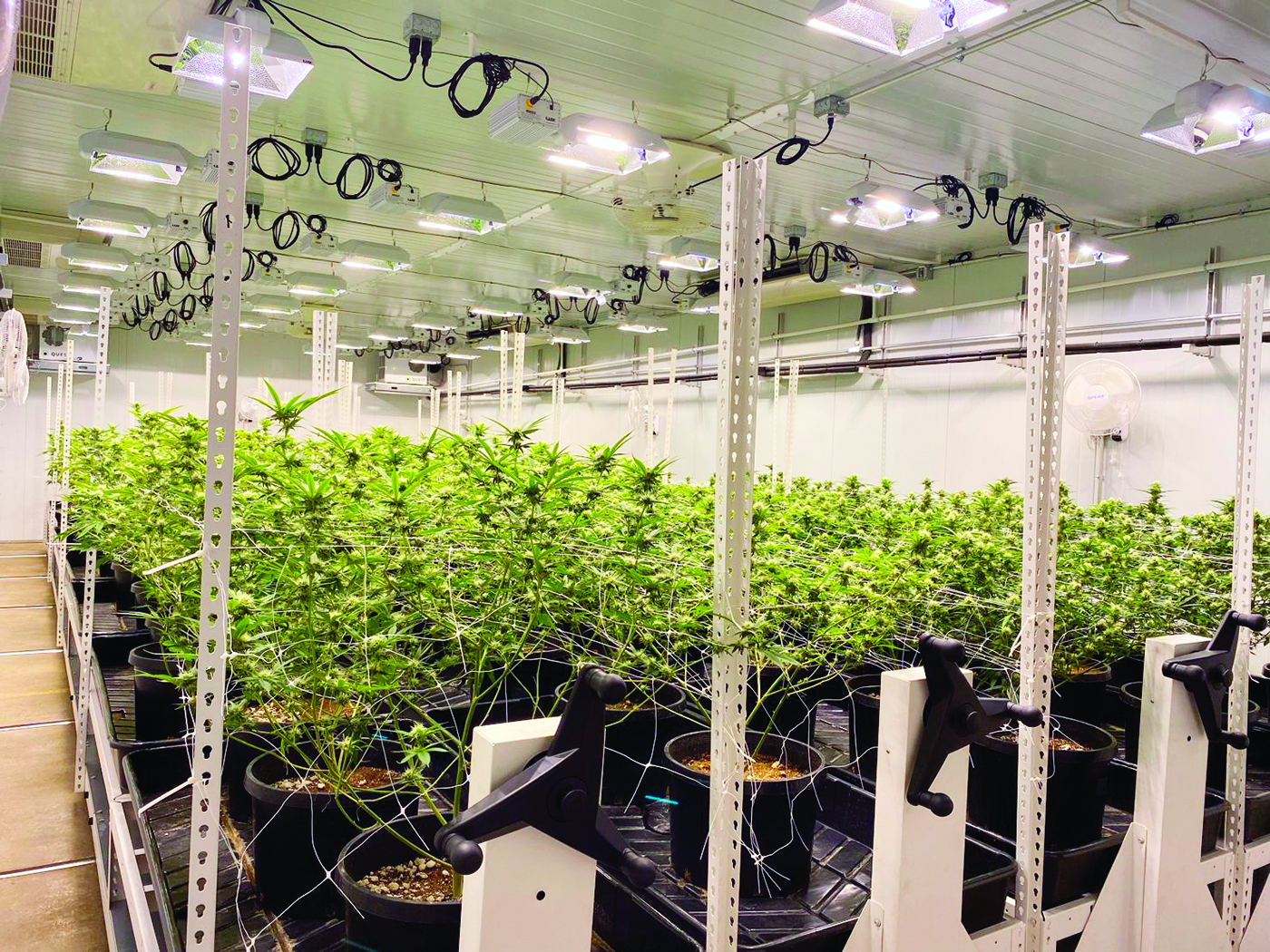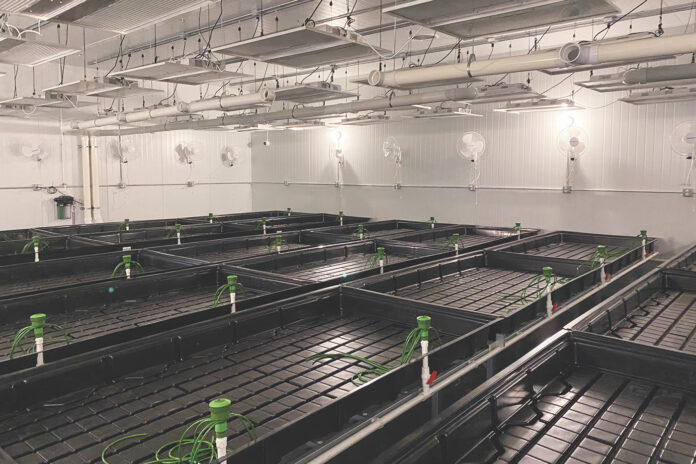When non-cannabis companies begin contributing to the industry, a breakdown in communication is almost inevitable—and for paneling companies entering the grow space, forgetting to factor in carbon dioxide (CO2) mitigation for indoor-grow buildouts is the sector’s primary new-to-cannabis learning curve.
Controlled-environment manufacturing company PermaTherm models the importance of scrutinizing every stop on the supply chain before building, a communication tactic the team prioritizes in every collaboration. As a result, their careful and increasingly popular approach to CO2 distribution helps growers prioritize plant benefits, cut costs, and maximize yield so they can create quality products with optimum efficiency.
The secret recipe for success
Any experienced cultivator will attest how essential CO2 is to the growing process. Without the chemical compound, crops struggle to succeed and yields are almost guaranteed to plummet in both quantity and quality.
While many legacy growers may call this information common knowledge, grow-room manufacturing companies are less likely to be familiar with some of the subtleties—especially if they’re coming into the industry from another vertical.
Although PermaTherm entered the cannabis industry from food processing in 2017, the company admitted what it didn’t know from the beginning. The team began collaborating with cannabis growers by asking questions, listening, and considering cultivators’ unique needs before diving in.
“CO2 is probably one of the most expensive aspects of a grow room,” said PermaTherm Sales Director Paul Casola. “Growers use the compound for the benefit of their plants, and when the room isn’t sealed properly, that CO2 can be lost. That loss costs a lot of money.
“People who decide to work with us like our unique system of panels and how we install them,” he continued. “We treat our rooms like they’re a freezer or cooler, and CO2 loss is minimal as a result.”
A tight grow-room seal is standard focus for indoor cultivation manufacturers, but while it makes environmental control much easier, it also can make natural CO2 access more difficult for plants. Without proper CO2 access, photosynthesis is nearly impossible. On the other end of the spectrum, too much CO2 can slow down plants’ progress—and still potentially mess with photosynthesis. Optimizing a grow requires a delicate balance.
While CO2 distribution is somewhat on the radar of most commercial plant-growing operations, PermaTherm was alerted to its importance for cannabis when the company solicited product feedback from some of its cultivator clients.
“CO2 mitigation seemed to be a big focus of theirs, more so than in microgreens or the like,” said PermaTherm General Manager Chris Lake. “And we’ve learned utilizing CO2 during the flowering stage is particularly effective for improving yields.
“Not everyone assembles a grow room in the same way, but when you’re talking about CO2 mitigation, it’s essential to follow a certain installation process,” he added. “For example, not everyone seals all their ceiling seams, but that’s one of our recommendations when you purchase our products. Not all builders believe in that as a necessary step, but if you use our installers, we ensure they’re trained to do it and do it well.”

PermaTherm’s meticulous method
PermaTherm doesn’t limit its interaction with customers to the sale. Instead, part of the company’s approach is a thorough pre-construction discussion of the reasoning behind the team’s designs, and CO2 is a major touchpoint.
“We’ll ask a customer, ‘Are you going to use CO2?’ And if the answer is yes, we’ll explain how important it is to seal those seams,” Lake said. “Then we’ll say, ‘Here’s how you do that, and here’s what we recommend.’”
The success of PermaTherm’s approach is proved in the cultivation pudding: The company boasts 34 percent less CO2 leakage than its competitors, which ultimately helps growers spend less money, time, and effort on their crops.
The impressive results might have something to do with PermaTherm’s unique way of collaborating directly with clients. While most other panel manufacturers utilize contractors as middlemen throughout the design process, PermaTherm handles this stage in-house. “Most cultivators will have to pay someone to design the panel layout and walk through the initial drawings, but we include that as part of our process,” Casola said. “We provide consultation on everything down to the screws, which reduces stakes in the long run.”
This helps minimize breakdowns in communication and the potential for supply-chain disruptions. “We just worked with a customer who hired a general contractor, who then brought in an installer to do the job,” Casola said. “The installer came back and said a particular product in the sealing process wasn’t needed. We handled that by going to the end user and general contractor and saying, ‘Listen, your installer wants to take this off. Let’s go back and talk about why this product is on there in the first place.’
“If we weren’t working with the end user and general contractor, we never would have known what the installer said, and they never would have known where the potential issues might have stemmed from,” he continued. “If we miss a detail, we fix it free of charge.
“We know we have a great product, but the most important product is the one cultivators are trying to grow,” he added. “We’re just here to help them grow it.”











